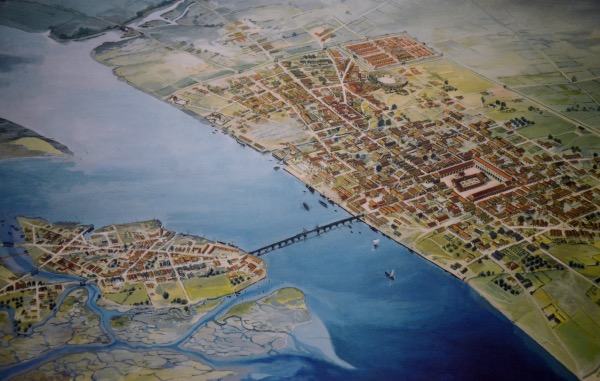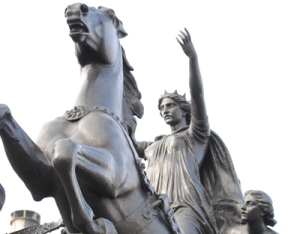Simply put, this is the name London was given during Roman times (and perhaps derives from an earlier Celtic word – although this remains the matter of much speculation).
There’s no substantial evidence of a settlement where London now stands until after the arrival of the Romans in 43 AD. The location was selected for the ease with which the Thames could be bridged and two hills which stand in what is now the city of London – Ludgate Hill on which St Paul’s cathedral stands and Cornhill – which could be fortified as a military stronghold.

The fledging settlement was destroyed during the revolt of Queen Boudicca of the Iceni in 60 AD but rebuilt centred on Cornhill and the Walbrook stream. By the 70s AD, the main public buildings of the forum and basilica were placed on high ground east of the Walbrook and by the end of of the first century AD further grand buildings – the governor’s palace, amphitheatre and baths – had been added. Waterfront infrastructure for shipping – including quays and warehouses – stretched along the northern side of the river.
A fort was added and public buildings renovated before the visit of the Emperor Hadrian in 122 AD. Another fire destroyed much of the city but it was again rebuilt and late in the 2nd century walls were built around it, partially encircling a site of some 330 acres. Buildings subsequently constructed in the 3rd century included the Temple of Mithras and a monumental arch.
There were known to have been “suburbs” including at both Southwark and to the west around Trafalgar Square and cemeteries were built outside the walls.
The city’s population had already contracted somewhat by the time the legions were recalled to Rome in 410 AD. While the walls still offered the inhabitants some protection 50 years after the withdrawal of the legions, there’s scant evidence for how much longer it remained inhabited with the Anglo-Saxons known to have viewed the ruins of the Roman buildings with some trepidation.
 4. Number four is another in our current series on London battlefields – this time looking at the site where Queen Boudicca is believed to have been defeated by the Romans –
4. Number four is another in our current series on London battlefields – this time looking at the site where Queen Boudicca is believed to have been defeated by the Romans – 